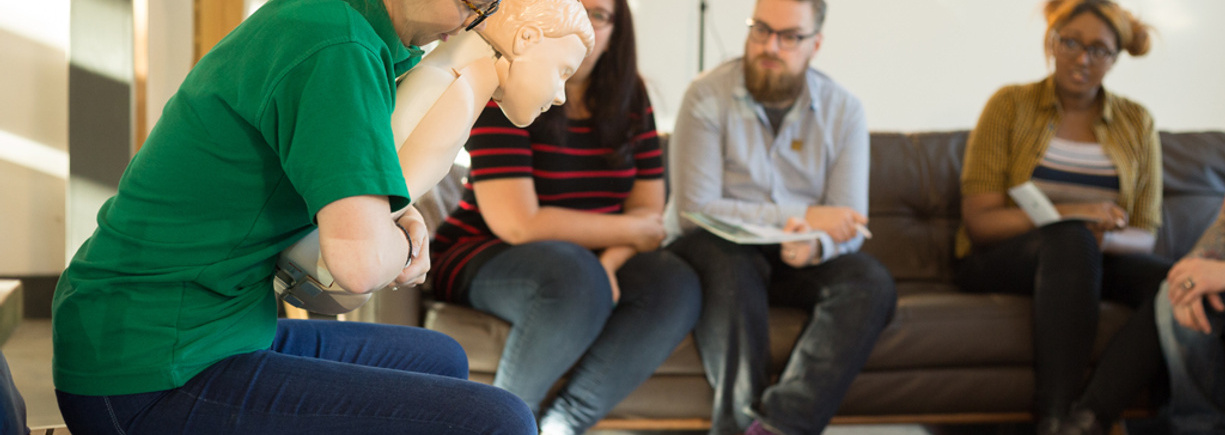Learning first aid that is specifically aimed at babies and children will help you feel more confident and empowered as a parent. Taking a paediatric first aid course can help you learn essential skills that could save your child’s life and/or help them if an accident ever happens.
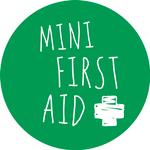
Twins Trust has partnered with Mini First Aid, a multi-award-winning Baby & Child First Aid class provider who offers classes for parents, grandparents and carers which are delivered in a relaxed and comfortable style, giving you the confidence to know what actions to take if faced with a medical emergency.
Twins Trust Mini First Aid Online Course is for parents with babies and children and focuses on life-saving topics including CPR, choking, bumps, burns, breaks, bleeding, febrile seizures and Meningitis awareness. The courses are tailor made for anyone caring for twins, triplets or more.
First aid advice
The facts
- 30 babies and toddlers go to hospital every day with a hot drink burn
- Hot drinks are the most common cause of burns in children
- The kitchen is the most dangerous room in the home for burns to occur
- The immediate physical pain of a burn is not the only impact– being burned or scalded can mean years of painful treatment. The psychological damage can also be huge, from the ongoing pain, to living with lifelong scars.
Safety guidance for your home
Do:
- Do install smoke alarms on each floor of your house and test regularly
- Do keep hot drinks out of reach of babies and young children
- Do make and practise Fire Escape Plans with the whole family
- Do run cold water first in the bath or sink before adding hot water – test the temperature
- Do install thermostatic mixing valves in all hot water outlets
- Do keep saucepans at the back of the stove not near the front – turn handles to the back
- Do keep kettles, irons, hair straighteners or wires out of reach
- Do keep secure fire screens in front of open fires, heaters & radiators
- Do store matches and lighters out of reach
- Do store chemicals, cleaners and acids out of reach
Don’t:
- Don't drink hot drinks while nursing/holding a baby or child
- Don't put a baby or child into a bath or sink until the water has been tested
- Don't warm baby bottles in the microwave
- Don't leave hair straighteners unattended
- Don't allow children near BBQs or garden chemicals
- Don't allow children near fireworks
- Don't leave children unattended in the kitchen, bathroom or near fires and heaters
First aid advice if your child suffers a burn
It’s really important to stay calm and act quickly. What you do immediately following the burn can hugely impact the severity of any injury or scarring which may occur:
- If you’re not alone and the burn is larger than a 50p piece, ask another adult or older child to call an ambulance immediately
- This leaves you free to cool the burn. Apply cool, running water to the burn area for 20 minutes. Babies and children will not want to be held under cool water for 20 minutes, and will most likely be very distressed, but doing this can make all the difference to the outcome of the burn. So try to stay calm and reassure them this will help make them better
- Once under running, cool water (the shower may be the best place for this) call an ambulance if you haven’t had the chance to yet
- Whilst cooling the burn, remove any clothing and jewellery near the burn, unless it is melted or firmly stuck to the wound. Hot liquid can run into nappies, socks and shoes, so remember to remove these too
- Only after the minimum of 20 minutes, cover the burned area with cling film or a sterile non-fluffy dressing or cloth, and make sure the patient is kept warm
Take a picture of this handy infographic and store on your phone in case of emergency:
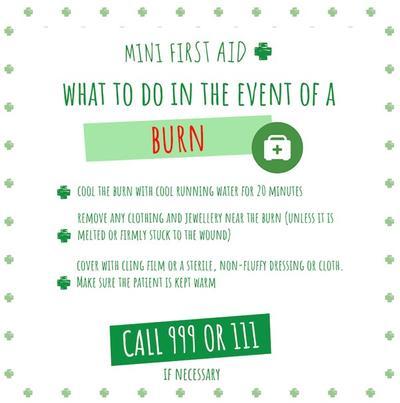
How do you know when your little one is choking and not gagging? When do they need help from you? And would you know what to do if it was an emergency? Here's what you need to know...
Have you heard of the gag reflex?
We are all born with a gag reflex. It might sound dramatic when your little one is gagging, but it is totally natural and automatic. If you don’t know what we’re talking about, have you ever accidentally breathed in when you were swallowing? That coughing and spluttering is your gag reflex and in babies it’s at its strongest. Gagging is a safety response and when you see your baby or child gagging, it’s because they’re actually solving the problem – they’re moving that piece of food away from their windpipe.
But . . a lot of us get confused, and often mistake the signs of gagging for choking – it does sound pretty frightening after all! These signs include coughing, spluttering, going red in the face and making a lot of noise.
Whilst gagging is very dramatic, choking is for the most part silent. That’s why it’s so important not to leave little ones alone when they’re eating, because you will not hear them if they are choking. You also wont see the signs of lips turning blue, which indicates insufficient blood flow to the lungs.
The way we help parents remember the difference between choking and gagging is: “Loud and red, let them go ahead. Silent and blue, they need help from you!”
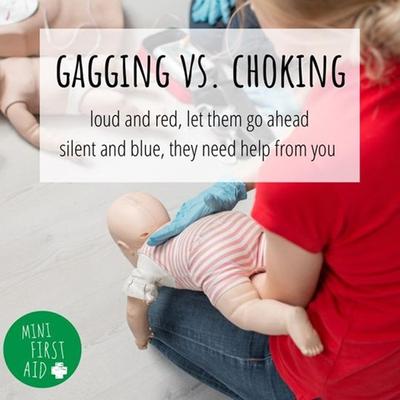
What choking hazards should I be aware of?
- whole grapes
- popcorn
- cherry tomatoes
- lollies and boiled sweets
- hotdogs and sausages
- marshmallows (both big and mini)
So take particular care when feeding your child these foods and make sure they are chopped correctly – grapes, tomatoes and mini sausages should all be quartered length-wise to avoid choking.
How do I deal with a choking incident?
It’s vital that all parents and carers know how to deal with a baby or child who is choking.
Choking baby (aged 0-1)
- 5 back slaps.
- Up to 5 chest thrusts (jabbing motion). Check if anything comes out. If nothing has come out, call 999.
- Cycles of 5 back slaps and 5 chest thrusts.
Choking child (aged 1 – puberty)
- Encourage child to cough.
- 5 back slaps between shoulder blades. Check if anything comes out & check mouth.
- Up to 5 abdominal thrusts. Clenched fist between tummy and breastbone, with other hand over the top. In and upwards motion. Check if anything comes out. If nothing has come out, call 999.
- Cycles of 5 back slaps and 5 abdominal thrusts.
You must always refer to hospital any child or baby who has been choking and where abdominal manoeuvres have been used.
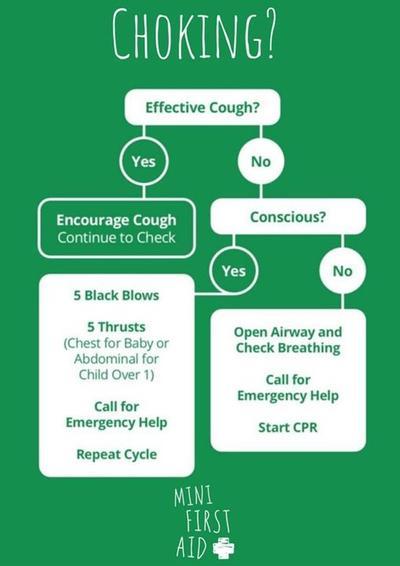
What is CPR and when should it be used?
CPR stands for cardiopulmonary resuscitation, and it should be used on anyone who is unconscious and not breathing normally, after calling 999.
Why are CPR techniques different for adults and children?
There are many reasons why people might stop breathing and their heart stop beating. In adults it is usually due to a cardiac event meaning the heart is not pumping properly, whereas in children, it tends to be a respiratory problem that has affected their breathing. This is why rescue breaths are important.
Performing CPR can be a really frightening situation to deal with. This is especially true when faced with a baby or small child who needs CPR, for fear of hurting them or doing the wrong thing.
Remember: doing nothing is the worst thing you can do. Below are the techniques to use, and don’t forget that after calling 999, you will be given basic life-saving instruction over the phone, to give you the confidence to proceed with CPR.
How to perform CPR:
Mini First Aid have created 3 flowcharts to show you how to perform CPR. Screenshot and save, in case you ever need them.
Checking for breathing
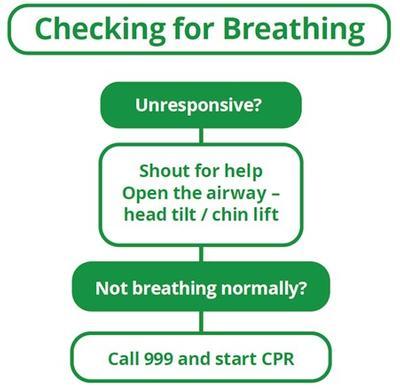
CPR for baby under 1
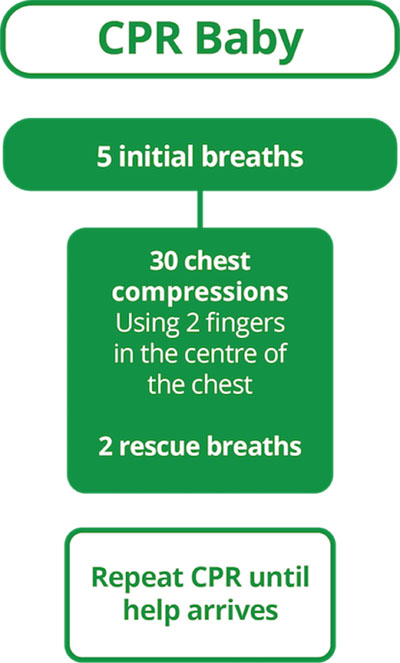
CPR for child over 1
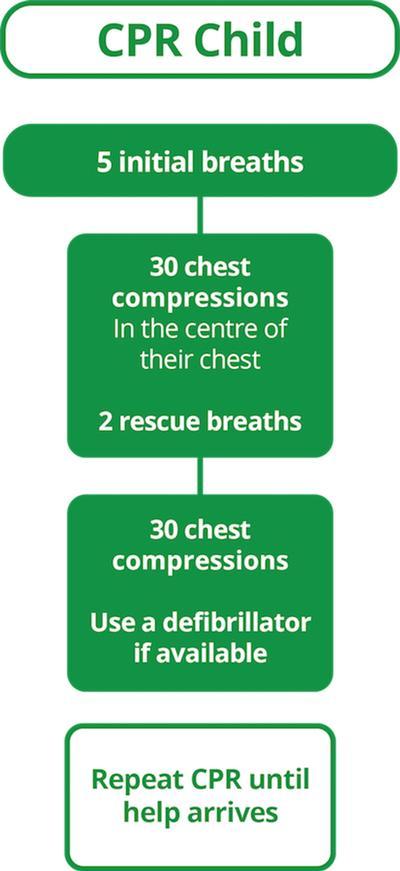
More often than not, when a parent attends our course it is the first time they have ever heard of febrile seizures. Whilst we don't want to frighten parents, we feel it’s better to be forewarned and forearmed. After all, if your child experiences a febrile seizure and you have never heard of them, it is likely to be an extremely distressing experience.
What is a febrile seizure?
Febrile seizures (also known as febrile convulsions) are fits that can happen when a child has a fever. They most often happen between the ages of six months and three years, the age in which our body’s heat control system is rather amateur and we are unable to regulate our body temperature properly. Illnesses which bring on a fever such as chicken pox, flu, ear infections and tonsilitis are some of the more common causes of febrile seizures, although it’s important to remember they don’t usually cause seizures.
What happens during a seizure?
When a baby or child experiences a febrile seizure, their body goes stiff and twitches or jolts (sometimes violently), and during this time they will be unconscious. Sometimes the child will be sick, foam at the mouth and their eyes may roll back. The seizure (fit) usually lasts for less than five minutes.
After the seizure, your child may be sleepy for up to an hour. A straightforward febrile seizure like this will only happen once during an illness.
How should you react to a febrile seizure?
- As much as you can, stay calm and remember this is just the body’s way of coping with an unusually high temperature.
- Place the baby/child on their side with their head tilted back. Stay with them and try to keep a note of how long the seizure lasts.
- Do not put anything in their mouth including medicine or a thermometer as this could cause injury or tongue biting.
- Cool them by removing additional layers of clothing.
- Call 999 and ask for an ambulance, making them aware if you think the seizure has been caused by a serious illness like meningitis.
While it is unlikely there is anything seriously wrong, it is nevertheless important to get your child checked over by medical professionals by alerting 999. Febrile seizures usually only occur once, so if the seizure reoccurs within 24 hours, again ring 999 as this could be a sign of something more serious.
Safety advice
Main things to consider to make sure your home is safe for your little ones:
1. Stairs. Until you are able to install a safety gate, keep the door shut so your baby stays in the room with you – even the loo!
2. Windows. Move beds, chests of drawers, cabinets or anything else that a child can climb onto away from windows.
3. Stove. Get in the habit of using the back burners of your stove and angling pan handles away from the edge.
4. Hot drinks. Keep cups and any glass or china out of your child’s reach in the centre of a table, and don’t carry your baby and hot drink at the same time.
5. Poisons. Move household chemicals, medicines, and any other poisons out of lower cupboards and out of your child’s reach.
6. Choke hazards. Have a really good clean-up. Check under cupboards, beds etc. for small items that your child might find. Pull off the sofa cushions to find coins (always a bonus) etc. that may have fallen out of pockets unnoticed.
7. Dirty nappies and other rubbish. Review where you keep refuse before throwing it out so that your child can’t get to it (bins in the bathroom are often small and accessible to a child). And keep those new nappy sacks out of reach too.
8. Plug sockets. Ensure that sockets are always switched off when not in use, and electrical items are not left where a child may find them and plug them in. For example, hairdryers / straighteners and electric fires are often left next to plug sockets on the floor and can do enormous damage if a child inadvertently turns them on.
9. Plants. Many plants are poisonous, and the way the leaves swish and move are fascinating to a child, so move them up and out the way for the time being or lend larger ones to a friend for safekeeping.
10. Look through your child’s eyes. Get down on your knees so you can see what they see. What would you do if you were them? Some of the risks you can do something about immediately, others it is important to be aware of so you can keep a watchful eye as your child grows and becomes more mobile.
More about Mini First Aid
Mum of six, (including 2 sets of twins) Kate Ball established Mini First Aid in January 2014, offering quality baby and child first aid and family safety classes to parents and carers. Mini First Aid now trains over 1000 families each week across our 70+ UK franchises. The multi-award-winning Zoom classes are delivered in a relaxed and comfortable style and give participants the confidence to know what actions to take if faced with a medical emergency. Kate, husband Matt and four of their children (including twins Emily and Olivia) appeared on the terrifying Dragons’ Den in 2021, securing investment from Sara Davies MBE. Mini First Aid is a member of the First Aid Industry Body and Association of First Aiders. Mini First Aid is delighted to have its courses accredited by The CPD standards agency.
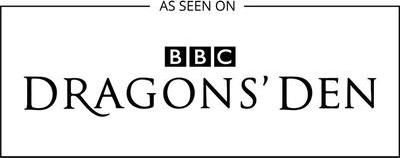
-strap.svg)
